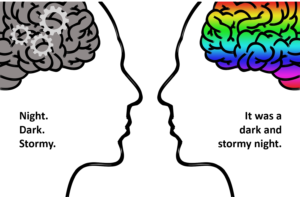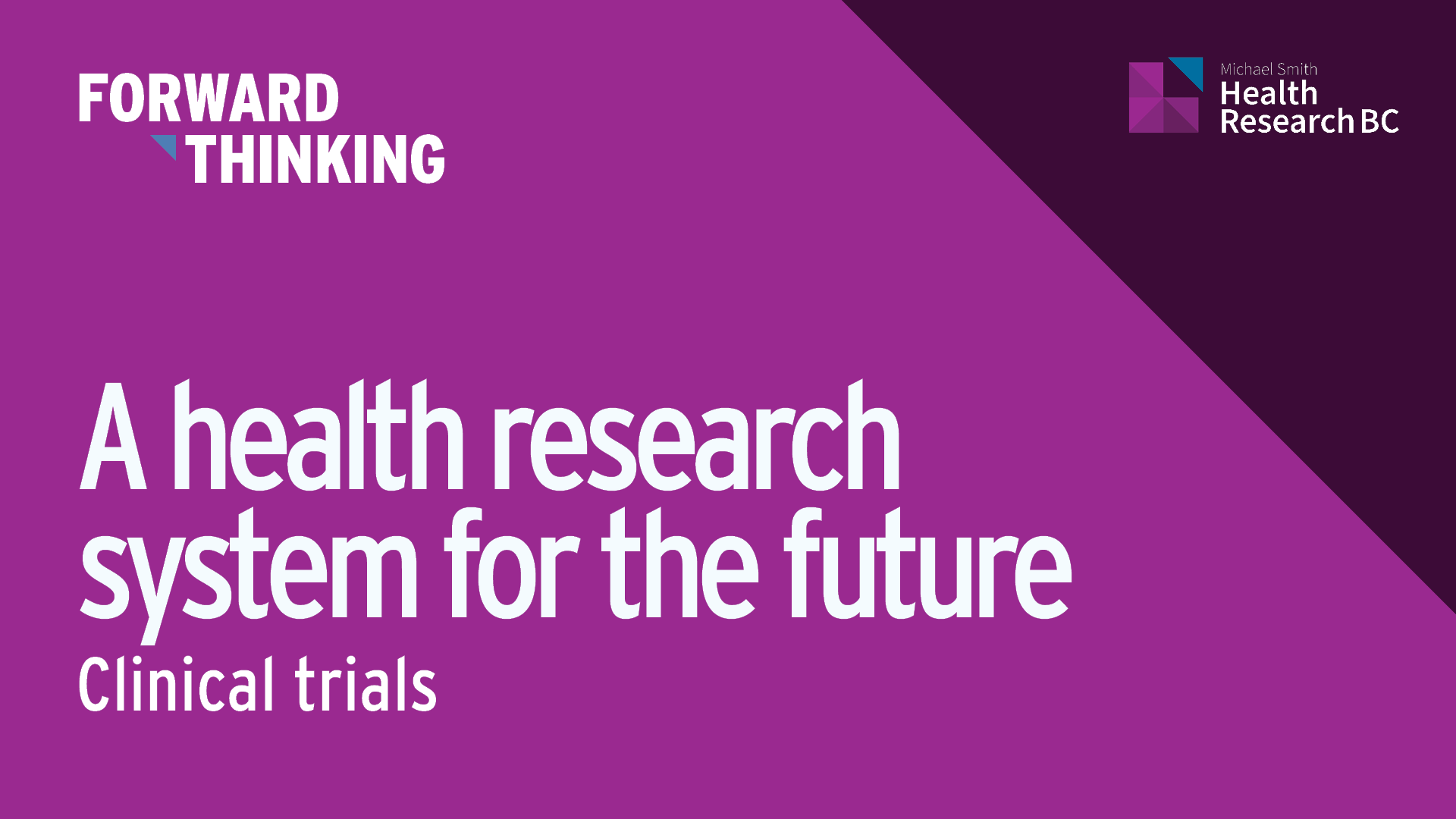Forward Thinking: How to tell the story of a health research funder
27 February 2019

For generations, stories have played a key role in human cultural development, helping us share cultural norms, warn of potential danger, and make sense of the world around us.
In this blog, Lori Last, MSFHR’s director, marketing & communications, and Amy Noise, MSFHR’s manager, marketing & communications, introduce the science of storytelling, and outline how to apply those principles to demonstrate the value and impact of health research funding.
Forward Thinking is MSFHR’s blog, focusing on what it takes to be a responsive and responsible research funder.
Once upon a time: How to tell the story of a health research funder
The fact that you are here, reading this blog post, likely means you have read other blogs in our Forward Thinking series, discussing what it takes to be a responsive and responsible research funder. We’ve tackled topics like gender equity in health research, public and patient engagement, how we design and grow our funding programs, and how we approach knowledge translation.
But we haven’t yet talked about how we communicate our work. What is the best way to share the work of a health research funder in a way that gets people excited about the value and impact of health research and the organizations that enable it?
You tell stories.
The science of storytelling
Since childhood, most of us have loved stories. They not only provide entertainment and an escape from the everyday, they have also played a key role in human cultural development.
Turns out, human brains are wired to process stories. When you are presented with a series of facts, two parts of your brain are activated (Broca’s area and Wernicke’s area). These areas decode the meaning of the words, so you can understand what you are hearing or reading. But when you read or listen to a story, many different parts of your brain light up. If the story includes a description of a delicious meal, your sensory cortex lights up. If it includes a game of tag, your motor cortex is activated as if you were actually experiencing the event.
Scientists have learned that we process imagined experiences, like stories, in a similar way to how we process real experiences, which explains why stories can stir up genuine emotions and stimulate behavioural responses. This is in part because of the chemicals released when we experience a story — cortisol, which helps us form memories; dopamine, which regulates our emotional responses; and oxytocin, which is connected to feelings of empathy and relationship building.
Our visceral reactions to stories explains their long standing place in human history. From the earliest days, humans told stories to each other to share cultural norms, warn of potential danger or to explain the world around them. Storytelling patterns evolved over time, and we still fall back on those patterns today.

experiencing what we are hearing.
What makes a good story?
Whether you’re a fan of comedy, romance or sci-fi, chances are your favourite stories all follow a similar structure: context, struggle, resolution.
Aristotle laid out this broad format over two thousand years ago, and since then many others have expanded on this structure from Joseph Campbell’s 12 step Hero’s Journey to Christopher Booker’s Seven Basic Plots. The common theme is a protagonist being shaken out of their day-to-day world and embarking on a journey, overcoming a challenge, and returning triumphant.
We’ve all seen this structure play out again as it is a very common technique used by writers and film-makers, and it’s also a technique that can help organizations tell their story.
How to tell your organization’s story
As a health research funding organization, not only is it important to us to consider what we communicate about our organization and the impact we have, but how we communicate.
- Provide the context
Like most organizations, we share routine information; in our case, information about our funding opportunities, award recipients, and other operational updates through our core communications channels (our website, monthly newsletter and social media). Although these always feature an element of storytelling, they are very closely tied to operational business needs — the context if you will. - Share success stories
We also share success stories. We launched Spark, our twice annual digital magazine, to give us a vehicle to tell the story of the broader impact of health research funding. Each issue follows a typical story structure; a research question that needs solving (the context), the researchers we’ve funded who worked to find answers to that question (the protagonist embarking on a struggle/journey), and the impact on British Columbians who are benefiting from this work (the resolution).In Spark, the protagonists are either researchers or patients. So how do you highlight your organization as a protagonist in its own right? You have to show your own journey. - Don’t forget the journey
It’s a trap a lot of organizations fall into. Sharing operational information has to happen for an organization to function, so that gets done. Every organization wants to showcase their value and impact, so success stories get shared. But it is easy to overlook the journey in between. The trouble with overlooking the journey is that’s where you fall in love with the characters, where you learn about the protagonist (that’s us!), how they work, and their challenges. You need that perspective in order to really care about the resulting success. This is where our Forward Thinking blog comes in. It’s a way of sharing our journey and helping people understand what we do, and why it matters. Of course, journeys are not always smooth. So as well as featuring the great work we’re doing, you are just as likely to read a Forward Thinking blog about an initiative we are still working through, the challenges we’ve faced and how we are working around them. Sharing vulnerability in this way can be scary, but it presents a great opportunity to learn.
Growing and learning
As an organization committed to continuous learning and improvement, we feel strongly that removing the mystery of what we do, and sharing our experiences to advance the science and practice of research funding, is a key part of our role as BC’s health research funder.
So, as we’re thinking ahead to our next year of Forward Thinking blog posts, leave us a comment below to let us know if there are any areas of health research funding that you’re itching to hear more about.
This blog is adapted from a presentation given by the authors at the 2019 BC Communications Forum.





